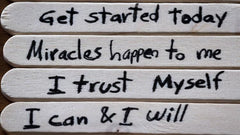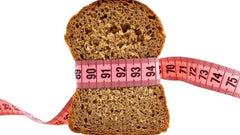
How Long Does It Take to Start Losing Weight
If you’re just starting a different diet or a new exercise routine, you probably want to know how long it’ll be till you see results. You want to know: How long does it take to start losing weight?
We all wish we could just shed those pounds whenever we do a quick workout. Unfortunately, that’s not how this thing works.
Just like putting on weight doesn’t happen overnight, neither does losing weight. Unless you’re working with drastic (and not to mention, unhealthy) methods like starving yourself, it’s going to take a bit of time to start losing weight.
This slow weight loss is actually much healthier for you. If you’re losing pounds in a period of days, or even weeks, chances are you’re not losing ‘good’ weight by burning fat. Most likely, you’re losing water weight, or in serious cases, shedding muscle mass.
In this article, we’re going to talk about how long it takes to lose weight, and explain why slow and steady weight loss is actually a good thing.
How long does it take to start losing weight
Many people start an exercise routine, and a week or two into the new routine find themselves wondering why does it take so long to lose weight?
There are lots of reasons for this, which we’ll get into in a bit. The main focus of this section of the article is the fact that weight loss isn’t (or at least shouldn’t be) something that happens rapidly. Slow weight loss is a much healthier way to deal with the problem of extra weight.
To understand how long it takes to start losing weight, you first need to understand the process of weight loss.

How Does Weight Loss Happen?
The healthy way to lose weight is to create a deficit of calories – that means to consume fewer calories than you burn. This is the opposite way in which a person gains weight: by consuming more calories than they burn.
Calculating how many calories you burn is a bit more complicated than people think, though. Many people think that they just need to compare the number of calories they eat to the number of calories that they burn through exercise.
There’s more to it than that, and there are 3 major factors involved in calorie burning (known as calorie expenditure).
- Your resting metabolic rate
This is the number of calories that your body burns even while you’re at rest. People with more muscle tend to have a higher resting metabolic rate, and thus burn more calories. You can actually increase your caloric expenditure by doing strength training and packing on more muscle.
- The calories burned during digestion
This is known as the thermic effect of food. Your body uses calories to process and digest food. This is why you sometimes hear about ‘negative calorie foods,’ like cucumbers, which actually cost more calories to digest than they contain.
- Calories burned through exercise and activity
This is known as the thermic effect of activity. This includes all activities, not just exercise, though exercise is the easiest way to increase the number of calories burned this way.
Combining all of these factors will provide you with the total number of calories that you burn during a day.
If you want to maintain your weight, then you will have to eat the same number of calories that you burn. To gain weight, you have to consume more calories than you burn and to lose weight, you have to consume fewer.
Other Factors Affecting the Speed of Weight Loss
There are some other factors that come into play when you’re trying to figure out how long it takes to lose weight. These include:
- Gender
Men tend to burn calories quicker than women. This is because they generally have more lean muscle mass than women. As mentioned earlier, the more muscle mass an individual has, the quicker they will lose weight.
Women tend to burn anywhere from 5-10% fewer calories than men, and some studies have revealed that men can burn fat up to 16% faster than women following the same diet plan.
- Age
As you age, you tend to gain more fat and retain less muscle. This will have an impact on your overall calorie expenditure, and older people tend to lose weight at a slower rate than younger people who have more muscle mass.
- Initial Body Weight
People who are heavier tend to lose more weight in the first couple of weeks of their exercise programs than people who have less fat. This is especially true when they are doing a diet that involves significant calorie cuts.
- Sleep Schedule
Another thing that can have a significant impact on a person’s ability to lose weight is their sleep schedule. People who frequently struggle with sleep deprivation tend to have a harder time losing weight. There are a number of reasons for this.
One of the reasons for this is the fact that sleep-deprived people tend to be more likely to crave unhealthy, calorie-dense foods. These foods contribute significant amounts of calories to a person’s diet without providing any nutritional benefit.
People who sleep for only 5 and a half hours a night have been shown to lose body fat 55% slower than people who are sleeping a healthy 8 and a half hours.

So How Long Does It Take?
The short answer to this question is that there is no short answer. The rate at which you’ll experience weight loss depends on all the above factors, and also upon the diet plan that you choose and your exercise regime.
The main point to consider here is not how fast you’ll lose weight, but how safely you’ll do it. Healthy weight loss takes time. It is possible to shed pounds in a period of days or weeks, but this is usually done through unsafe methods.
A number of side effects can emerge from rapid weight loss, such as:
- Increased chances of developing gallstones
- Malnutrition and nutritional deficiency
- Dehydration
- Headaches
- Irritability and mood instability
- Fatigue and lethargy
- Digestive issues, constipation
- Hair loss
- Menstrual problems
- Significant muscle loss (many people who lose weight quickly are actually shedding muscle mass as well as fat).
A safe rate of weight loss is somewhere between 1-3 pounds per week. This will, naturally, be higher for people who have a much higher amount of body fat. Also, you tend to lose weight faster at the beginning of an exercise program or diet.
Shoot for about 1% of your total body weight to be lost every week, but don’t be discouraged if you lose less one week. Neither should be set a high standard if you lose more weight during a different week. Weight loss is not set in stone, and you may lose different amounts during different weeks.
Health benefits of weight loss
There are a huge number of benefits that you can experience if you decide to start losing weight.
Keep in mind these benefits generally apply to people who are overweight in the first place. If you’re already at a healthy weight, then there’s not really much point (or benefit) to losing even more weight.
- Decreased risk of diabetes. Diabetes is a problem that occurs much more often in people who are overweight and obese, so limiting your weight is one of the best ways to prevent type-2 diabetes.
- Decreased blood pressure. Obesity can lead to chronic high blood pressure, which can lead to other cardiovascular problems down the road.
- Decreased risk of heart disease and heart attacks.
- Improved mobility.
- Improved self-confidence and quality of life.
- Reduced risk of experiencing strokes.
- Reduced back pain and joint pain. Carrying around more weight than your body is meant to handle can cause serious stress on your bones and joints, leading to long-term joint and bone pain.
- Improved energy levels. In addition to being more mobile, losing fat and gaining muscle will ensure that you have more energy throughout the day.
- Improved sex life. Not only can losing weight make you more confident and comfortable approaching people, but the improvements to your mobility and energy levels can also improve your sex life.
- Better sleep. Many obese people struggle with sleep issues, such as sleep apnea. Losing weight can improve your overall sleep quality, and can reduce the chances of developing sleep-related problems.
What are the best weight-loss strategies
If you’re wondering why is my weight loss so slow, you might just be using the wrong technique.
There are lots of different ways that you can begin to lose weight loss. The two most obvious, effective, and safe ways to do this are through diet and exercise.

Diet
There are so many different weight-loss diets out there that it can be difficult to decide which one to choose from. The reality is that none are really better than others (though some are certainly worse). It depends on your body type and how you need to lose weight.
Low-carb diet plans are touted as a good way to lose weight. The keto diet is a good example – people who start the keto diet tend to lose a large amount of weight in the beginning. However, two issues are present here.
The first issue is that a lot of the weight loss is actually water weight. Your body sheds retained water when it experiences a carbohydrate deficit. The second issue is that after this initial weight loss, low carb diets don’t often lead to more significant weight loss than other diets.
The main goal in a weight-loss diet is to reduce the total number of calories that you consume so that you’re burning more than you’re eating. This is called a calorie deficit.
Obviously, in terms of general health, you want to avoid low-nutrient, calorie-rich foods like refined carbs and junk foods.
One of the best ways to develop an appropriate diet plan is to speak with a registered dietician. This will allow you to figure out the best diet for your particular goals and will ensure that you can lose weight at an appropriate speed.
Exercise
In terms of pure weight loss, the exercise most often recommended is cardiovascular exercise. This is because cardiovascular exercise can directly influence fat burning – especially when combined with low-carb diets.
Your body generally runs on its glucose stores. Glucose is acquired by consuming carbohydrates. When your body burns through its glucose stores, it begins to use stored fat as a source of energy.
Cardiovascular exercise provides you with a quick way to burn through your glucose stores and start targeting fat. It generally takes about 20 minutes of cardio exercise to burn through your stored glucose – anything that you do after that will be directly burning fat.
The other thing to consider is strength training. For healthy weight loss, the two are best done together. Strength training increases your overall muscle mass, which will increase your overall metabolic rate.
This means that you’ll burn more calories when you’re at rest as well as when you’re exercising. And that means you’ll notice weight loss quicker.
Why slow and steady weight loss is the best weight loss
Remember, slow and steady weight loss is the best kind of weight loss.
Rapid weight loss generally isn’t healthy, and usually indicates some sort of health problem. The rapid weight loss that is experienced during the start of low-carb diets like keto, for example, chiefly occurs because the body is excreting water. This can lead to problems like electrolyte imbalance and the keto flu.
There are many physical health problems that can arise if you lose weight too quickly, ranging from mild issues like headaches and lethargy to more serious issues like gallstones.
The human body is the most adaptable piece of equipment on the face of the planet, and as such, it needs to be given time to adapt. This is why it’s best to shed weight slowly – it gives your body time to adjust to your altered mass. Without any adjustment time, you pose a risk to your general health.
Conclusion
Many people are underwhelmed when they realize that it actually takes some time and dedication to start losing weight.
Fortunately, understanding the human body and how we actually lose weight can help you maximize your weight loss potential.




